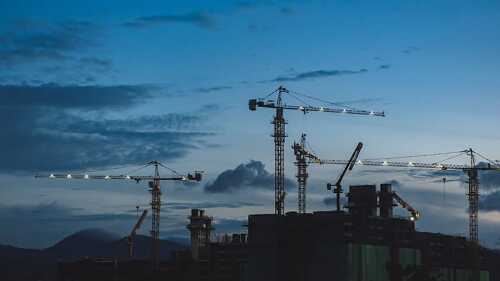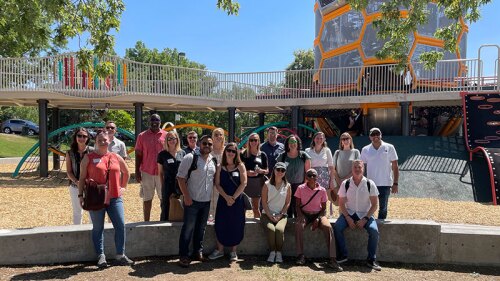Nearly every speaker at the ULI Europe 2020 Conference in Amsterdam had something to say about one issue: climate change.
“There’s a lot of awareness about climate change, but having awareness doesn’t improve your portfolio,” said Maarten Jennen, senior director of private real estate at PGGM in the Netherlands. Investing primarily for Dutch pension funds, PGGM has a real estate portfolio that includes about €14 billion ($15.3 billion) in assets under management, with exposure to about 4,000 properties topping a combined asset value of €160 billion ($174.9 billion). That kind of portfolio is like an oil tanker, Jennen said: it cannot turn on a dime, so the asset manager must continuously be looking ahead.
Threats to the climate topped the list of long-term risks in the World Economic Forum’s Global Risks Report 2020. “Climate change is striking harder and more rapidly than anyone expected,” the report authors wrote. Extreme weather, loss of biodiversity, climate action failure, natural disasters, and human-created environmental disasters are all very likely to occur, resulting in dramatic impacts on the world.
The property industry is directly at risk from increasingly frequent extreme weather events, and stricter regulations are shaping the development and maintenance of properties. The industry itself is a major source of carbon emissions: the buildings and construction sector accounted for 39 percent of energy- and process-related carbon dioxide emissions in 2018, according to the International Energy Agency.
Fantastic presentation from Dirk Brounen @crrem_project on asset risk monitoring for climate change. @ULIEurope helping to give visibility for this important open source tool. pic.twitter.com/s3PqUYX6pQ— Adam Challis (@Adam_Challis) February 5, 2020
“Real estate plays a big role in climate change,” said Dirk Brounen, professor of Real Estate at Tilburg University in the Netherlands. “But it also plays a big part in the solution.”
With the Paris Treaty’s target deadlines for reducing greenhouse gas emissions still 10 and 30 years away, people have not been responding immediately, he said. However, legislative enforcement is emerging—such as tax penalties or bans on renting out a properties that do not meet environmental standards—and investors such as Blackrock are making it clear they see climate risk as an investment risk.
Brounen and his team contributed to the new Carbon Risk Real Estate Monitor (CRREM), a free tool created with funding from the European Union. Reducing the European Union’s carbon footprint will require renovation of buildings, but this will not be financially viable for some of the assets. When users of the CRREM database add European assets to their CRREM database, they can see how long they have until the property in its current state is at risk of becoming a stranded asset. Users can also project the impacts of renovations or retrofits on property value and do analysis at the portfolio level.
PGGM’s approach to considering the effects of climate change on its portfolio involves assessing the government regulations in a specific jurisdiction; physical risk such as floods, earthquakes, and tornadoes in a particular area; and potential mitigating measures driven by structural quality.
The first step for PGGM was to determine where its assets are located. The company knew the addresses, but that alone does not provide actionable information about nearby bodies of water, fault lines, or surrounding structures. PGGM partnered with Munich RE to geocode all 4,000 assets around the globe for the risk analysis.
“You need a long-term, reputable, global provider of risk assessment, not a patchwork of consultants,” Jennen said. Munich RE’s Natural Hazard Assessment Network (NATHAN) fit the bill. PGGM’s properties are now ranked with a risk score from 0 to 4, with a time horizon of 2100. PGGM and Munich RE have written a white paper on their partnership, “Climate Risk Assessment in Global Real Estate Investing.”
“Now we can make even better-informed decisions,” Jennen said.
Andrea Carpenter, moderator and a founder of Women Talk Real Estate, asked Jennen whether PGGM was ruling out certain countries or cities on the basis of this enhanced level of risk assessment.
“We haven’t ruled out any countries, cities, or states,” he said. “There are increased risk profiles in Miami, but that doesn’t mean we don’t invest in it anymore.” Instead, PGGM focuses on balancing the portfolio for risk assessment. If one manager oversees an above-average number of properties at risk for flooding, for example, the company can readjust.
“Right now you might be able to insure risk,” Jennen said. For instance, if a Miami property’s basement floods and the insurance company pays back the owner, the user ratings on Yelp or Google Maps will tank, and people will no longer want to rent in that building. “Insurance companies will increase their premiums and might eventually decide they don’t want to be active in certain areas anymore,” he said.
In many cases, it is not necessary to wait until the risk materializes to see the pricing impact, Jennen said. “At some point in the future, it will be priced in,” he said. Brounen believes legislative risks are affecting prices already.
Ruud Veltenaar, a philosopher/entrepreneur and an ambassador for the United Nations Sustainable Development Goals, gave a TED-style talk after lunch on the importance of a sustainable business model.
“The biggest crisis for homo sapiens is our ability to solve problems,” Veltenaar said. “We are not homo sapiens, we are ‘homo economicus.’ We exploit nature, but we are nature. We’ve made business more important than our planet.”




